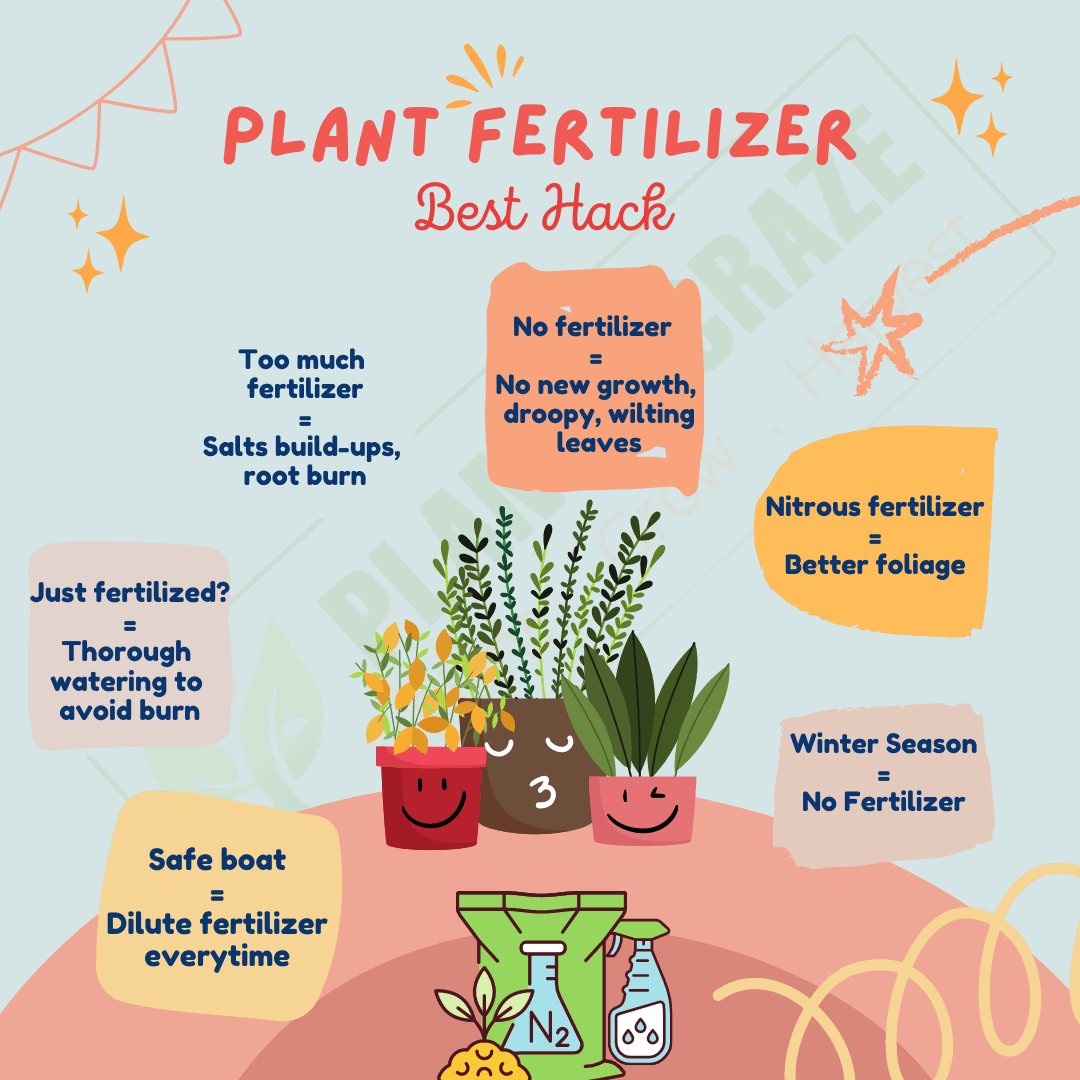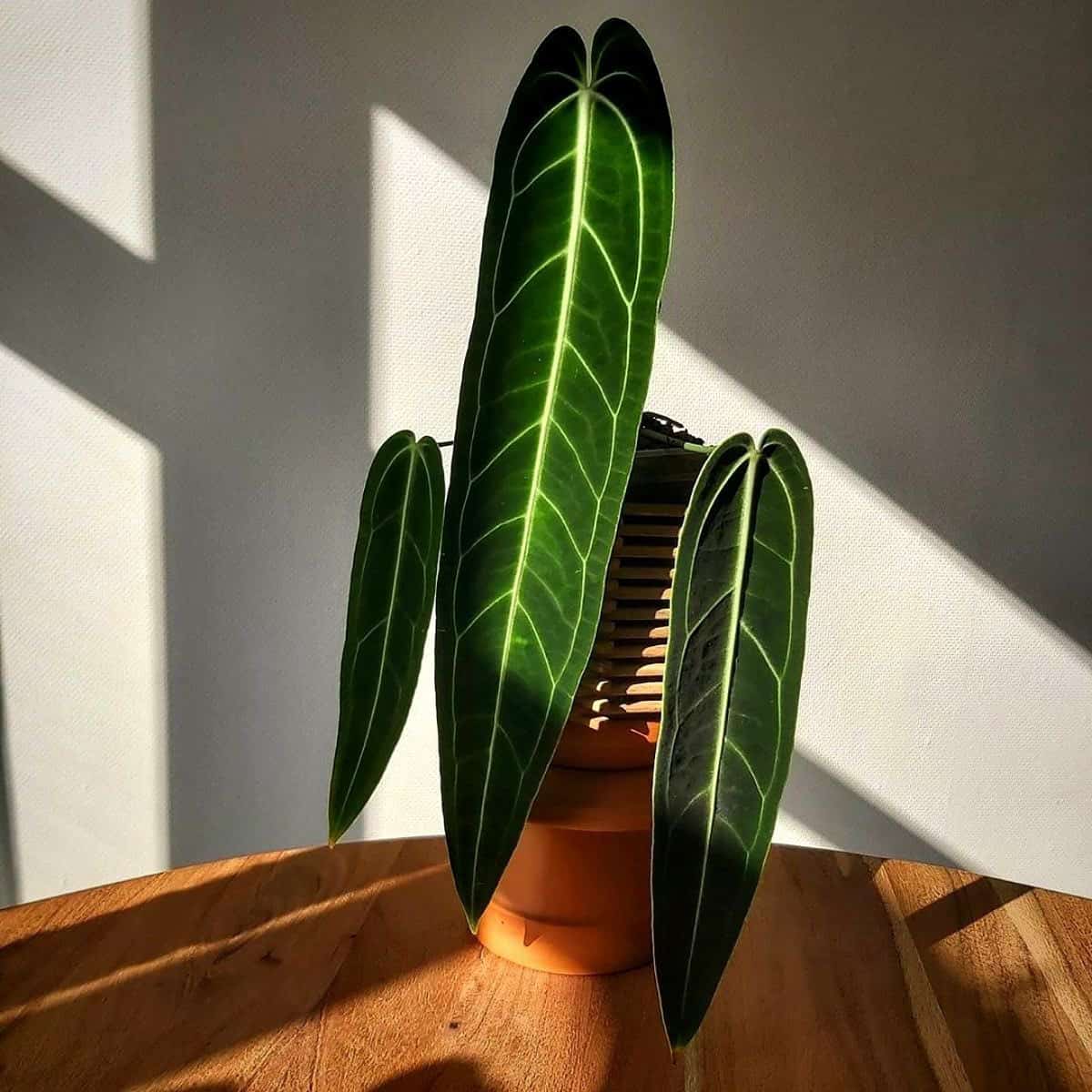The stunning large leaves of Anthurium warocqueanum crumble and turn yellow under poor care habits.
Let me walk you through the comprehensive care guide, so you can enjoy the immense foliage of Queen Anthurium.
Table of Contents Show
Overview of Anthurium Warocqueanum
Anthurium warocqueanum is a tropical climbing perennial native to Columbia. They are popular for their extensive leaves.
Also known as Queen Anthurium, they belong to the largest Anthurium genus of the Araceae family.
| Indicator | Identity |
|---|---|
| Scientific Name | Anthurium warocqueanum |
| Common Name | Queen Anthurium |
| Growth Zone | 9a to 11b |
| Growth Rate | Fast growth |
| Growth Habit | Epiphytic perennial climber |
| Growth Size | Indoor: 3 feet tall Outdoor: 6 feet tall |
| Grown For | Foliage |
| Foliage | Color: Dark green foliage with velvety backside Size: Up to 3 - 6 feet long. |
| Flowering Habits | Small infloresence with a spathe and spadix |
| Toxicity | Highly Toxic to both animals and humans |
Anthurium Warocqueanum Care
Anthurium Warocqueanum is a durable tropical plant with moderate care needs. But many gardeners do not suggest this Queen Anthurium to beginners.
Therefore, better not to gamble with the Queen on the first go if you are new to gardening.
1. Sunlight & Temperature
Anthurium warocqueanum proliferates in partially shaded canopies where the temperature stays >55°F.
Moreover, the morning sun works like a charm, so place them near an east or northern window.
But again, direct sun is a big NO. Exposure to direct sun destroys the leaves due to rapid dehydration.
It causes the leaves to curl, brown dry edges, and discoloration.
Remember, their velvety green fades away under low light and cold drafts. Furthermore, it pushes the plants’ growth, disabling them from reaching their full size.
In such situations, rely on grow lights (10 hours) that provide heat and light, frost blankets, or heating pads.
2. Watering & Humidity
Anthurium warocqueanum can not stand being thirsty and prefers to have its leaves dewy.
If your plant lacks water and humidity, the leaves will curl, wilt and drop. They will also look droopy and lose their vigor.
Conversely, overwatering or high humidity causes yellowing leaves with slimy stems. They also trigger pest and fungal diseases.
Many aroid plants prefer to have their topsoil completely dry before watering. But refrain from doing so for Anthurium.
You can aim for a saucer approach to keep your Anthurium warocqueanum hydrated.
3. Soil & Fertilizer
Anthurium warocqueanum asks for nutrient-rich, porous soil to sustain its velvety foliage.
Anthurium warocqueanum does not grow well in soil. Thus, give it sphagnum moss to grow on.
Otherwise, you can prepare a soilless potting mix using perlite, orchid barks, peat moss, and compost.

Meanwhile, mimic their natural feeding habits by giving liquid fertilizers after diluting them to their 1/4th strength.
Otherwise, you can rely on nitrous slow-release fertilizers once every two months.
4. Potting and Repotting
Anthurium warocqueanum won’t make a fuss for 2 to 3 years in a wooden or terracotta pot.
But if you notice your Anthurium has roots shooting out from drain holes and has outgrown the pot, consider repotting them.
In general, summer or spring is the ideal time to repot your Anthurium warocqueanum using pots 2″ bigger than the previous pot.
Meanwhile, to ensure less repot stress, soak the plant a few days before repotting.
5. Pruning
Until and unless your Anthurium warocqueanum hosts pests or gets infected with fungal diseases, you don’t need to prune them.
Besides, if you see a dead or decaying leaf, you can snip it off with sterilized scissors or a knife.
In such troubling times, pruning becomes handy as it can control and prevent further spreading.
Other than that, apply neem oil and fungicides containing phosphoric acid to treat and control fungal infection.
Furthermore, regularly clean the leaves with soapy water to discourage unwanted pest guests.
Anthurium Warocqueanum: All About Growth Rate
Anthurium warocqueanum has a unique growing habit where its baby leaves look identical to the leaves of Monsteras.
However, within a few days, they achieve an astounding size during spring and summer.
Meanwhile, they barely grow and stay dormant in the winter season.
In contrast to their large foliage, they have a relatively smaller plant height when kept indoors, i.e., a meter tall.
Not only does their foliage add aesthetic tropical beauty, but they also convey their health status.

If your Queen Anthurium has multiple big broad leaves, they are healthy and thriving for more.
Conversely, very few or one leaf may indicate something is not going well with them.
Similar to the Philodendron flowering, Queen Anthurium also produces typical aroid inflorescence.
However, Anthurium kept indoors is unlikely to bloom regardless of the level of care they receive.
The unshowy blooms have a small creamy white spadix wrapped in yellowish-green spadix.
After successful pollination, your Queen Anthurium can produce small redberries like aroid fruit.
Toxicity of Anthurium Warocqueanum
According to ASPCA, Anthurium warocqueanum is toxic to all pets and humans.
Upon ingestion, a burning sensation in the mouth, excessive drooling, and vomiting occur in pets.
The oxalate crystals can also swell the respiratory tract and cause breathing difficulty if your pets eat Anthurium in larger amounts.
As a first aid, you can give your pets milk to ease the burning sensation and reach out to the vet promptly.
Here I have listed a few hotline numbers to get help if you suspect Anthurium poisoning in your pets or kids.
- American Poison Control Center, APCC: (888) 426-4435
- Pet Poison Helpline: (855) 764-7661
Thus proper caution is a must while placing them indoors. So, ensure they are out of reach from your pets and kids.
But do not worry if you happen to touch them, as they do not pose any threat from touching.
Propagation Methods for Anthurium Warocqueanum
Anthurium Warocqueanum can be propagated via stem cutting and offset division methods.
Generally, early spring is preferred for the propagation of Anthurium to encourage maximum growth.
Before jumping into the propagation, ensure you have rooting hormone, pruning shears and fresh soil mix.
1. Offset Division
Let the offsets grow up to 4 to 5 inches tall on the crown, and then only use them to propagate your plant.
- Cut the small offset pups ensuring roots are intact on the cutting.
- Place the cutting on a moist Sphagnum Moss.
- Ensure cutting is placed at least 20cm apart from each other.
- You can give them a nitrous boost for optimal growth.
- Keep the newly divided plant in a warm and humid room.
2. Stem Cutting
Find a healthy stem with at least one leaf on top and make a clean cut at a 45° angle.
After cutting the stem, partially dip them in a jar filled with rooting hormone and water.
To ensure the water does not get stagnant, replace the water every now or then and keep the jar in a bright room.
Within a month, you can notice new roots sprouting and once they grow over an inch, transplant them in a pot using a fresh mix.
Besides that, you can directly sow the cuttings after the callus form on the stem.
- Take a pot with drainage holes and fill 1/3rd of it with perlite.
- Place the stem cutting in a pot leaving the leaf over the soil.
- Or place the pot in a terrarium to ensure rapid growth.
- Within a month, new root growth should be visible.
- Consider transplanting them after a few months.
- Proceed with the usual Anthurium care routine.
Anthurium Warocqueanum for Sale
Anthurium warocqueanum is comparatively rare than other Anthuriums, but it is accessible, thanks to the internet.
However, some varieties of Anthurium warocqueanum, like Chonks and Crystallinum, are rare, even online.
Here are a few online retailers where you can buy Queen Anthurium.
| Places To Buy | Delivery |
|---|---|
| Etsy | Within 3 to 7 business days |
| Ecuagenera | Ships within 2-3 days |
| Carnivero | Ships 1-3 business days after order |
| NSE Tropicals | Takes almost a week |
| The Plant Lady SF | Within a week |
Wrapping Up…
Anthurium warocqueanum is a fast-growing aroid with thick, velvety green leaves that grows big with proper nurture.
Remember, if the unshowy flowers of Queen stay green, it is a sign they are not getting enough sunlight. So, try relocating them to somewhere bright.
All The Best!


